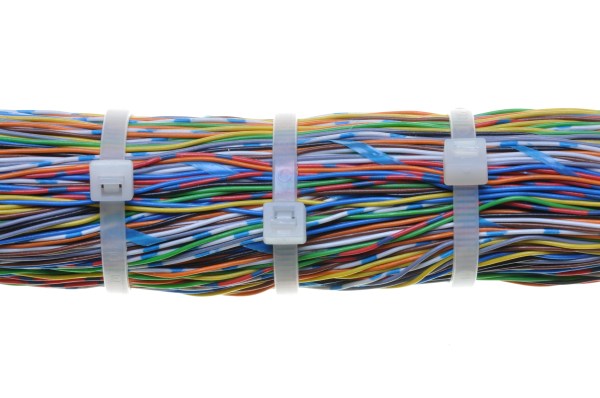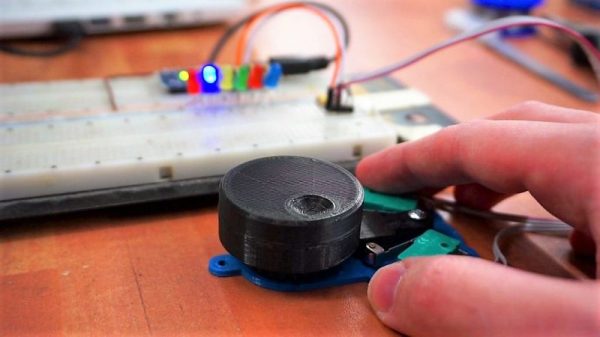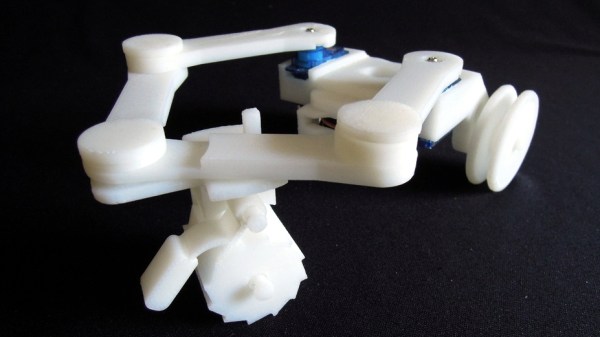Zip ties, Ty-Raps, cable ties; call them what you will, but it’s hard to imagine doing without these ubiquitous and useful devices. Along with duct tape and hot glue, they’re part of the triumvirate of fasteners used to solve nasty problems quickly and cheaply. They’re next up on the list of mechanisms we find fascinating, and as it turns out, there’s more to these devices than meets the eye.
ratchet12 Articles
Roll Your Own Rotary Encoders
[miroslavus] hasn’t had much luck with rotary encoders. The parts he has tested from the usual sources have all been problematic either mechanically or electrically, resulting in poor performance in his projects. Even attempts to deal with the deficiencies in software didn’t help, so he did what any red-blooded hacker would do — he built his own rotary encoder from microswitches and 3D-printed parts.
[miroslavus]’s “encoder” isn’t a quadrature encoder in the classic sense. It has two switches and only one of them fires when it turns a given direction, one for clockwise and one for counterclockwise. The knob has a ratchet wheel on the underside that engages with a small trip lever, and carefully located microswitches are actuated repeatedly as the ratchet wheel moves the trip lever. The action is smooth but satisfyingly clicky. Personally, we’d forsake the 3D-printed baseplate in favor of a custom PCB with debouncing circuitry, and perhaps relocate the switches so they’re under the knob for a more compact form factor. That and the addition of another switch on the shaft’s axis to register knob pushes, and you’ve got a perfectly respectable input device for navigating menus.
We think this is great, but perhaps your project really needs a legitimate rotary encoder. In that case, you’ll want to catch up on basics like Gray codes.
Rolling Robot With Two Motors, But None Are On The Wheels
This unusual 3D printed Rolling Robot by [ebaera] uses two tiny hobby servos for locomotion in an unexpected way. The motors drive the front wheel only indirectly, by moving two articulated arms in a reach-and-retract motion similar to a breaststroke. The arms are joined together at the front, where a ratcheting wheel rests underneath. When the arms extend, the wheel rolls forward freely. When the arms retract, the wheel’s ratchet locks and the rest of the body is pulled forward. It looks as though extending one arm more than the other provides for rudimentary steering.
The parts are all 3D printed but some of them look as though they might be a challenge to print well due to the number of small pieces and overhangs. A short video (embedded below) demonstrates how it all works together; the action starts about 25 seconds in.
Continue reading “Rolling Robot With Two Motors, But None Are On The Wheels”
First Ever Parts Emailed To Space
The shocking thing is not that this happened. The shocking thing is how normal it seems. An astronaut inside a space station needed a ratcheting socket wrench. Someone else on Earth drew it up on a computer then e-mailed the astronaut. The astronaut clicked a button and then the tool was squirted out of a nozzle. Then he picked up and used the tool for the job he needed done. No big deal.
The story itself is almost uneventful – of course we can do these things now. Sure, it happens to be the first time in mankind’s history we have done this. Yes, it is revolutionary to be able to create tools on demand rather than wait months for one to be built planet-side and put onto the next resupply rocket. But, amateurs living in places without even widespread electricity or running water have already built these machines from actual garbage.
Every once in a while a story slaps us with how much the future is now.
These particular 3d prints were duplicated on the ground, and both sets preserved for future comparative analysis to see if microgravity has any effect on 3d prints. They have an eye on sending them to Mars, a journey where resupply is more than just a couple-month inconvenience.
See the first link above for more detail and photos of NASA’s 3d printer and the Microgravity Science Glovebox in the Columbus laboratory module.
KMODDL: A Mechanism Maker’s Dream Site.
Computers are relatively new still, but we’ve had mechanics for a very long time. KMODDL keeps us from reinventing the wheel. It contains collections of mechanisms with descriptions, pictures, and even videos. We were working on a arbalest design not too long ago, and we were having trouble coming up with a clever ratchet design for one of the parts. We spent a few moments in KMODDL looking through the ratchet section of the Reuleaux collection, and soon after we had the basic building blocks of our design. Sure there are books you could buy that do a similar thing, but KMODDL is completely free, very in depth, and easier to search. Plus, with a useful tool like this you might not even have to take apart all your appliances anymore to see how they work. My first sewing machine might have lived a longer life had I seen this first. Anyone know of more resources like this?















